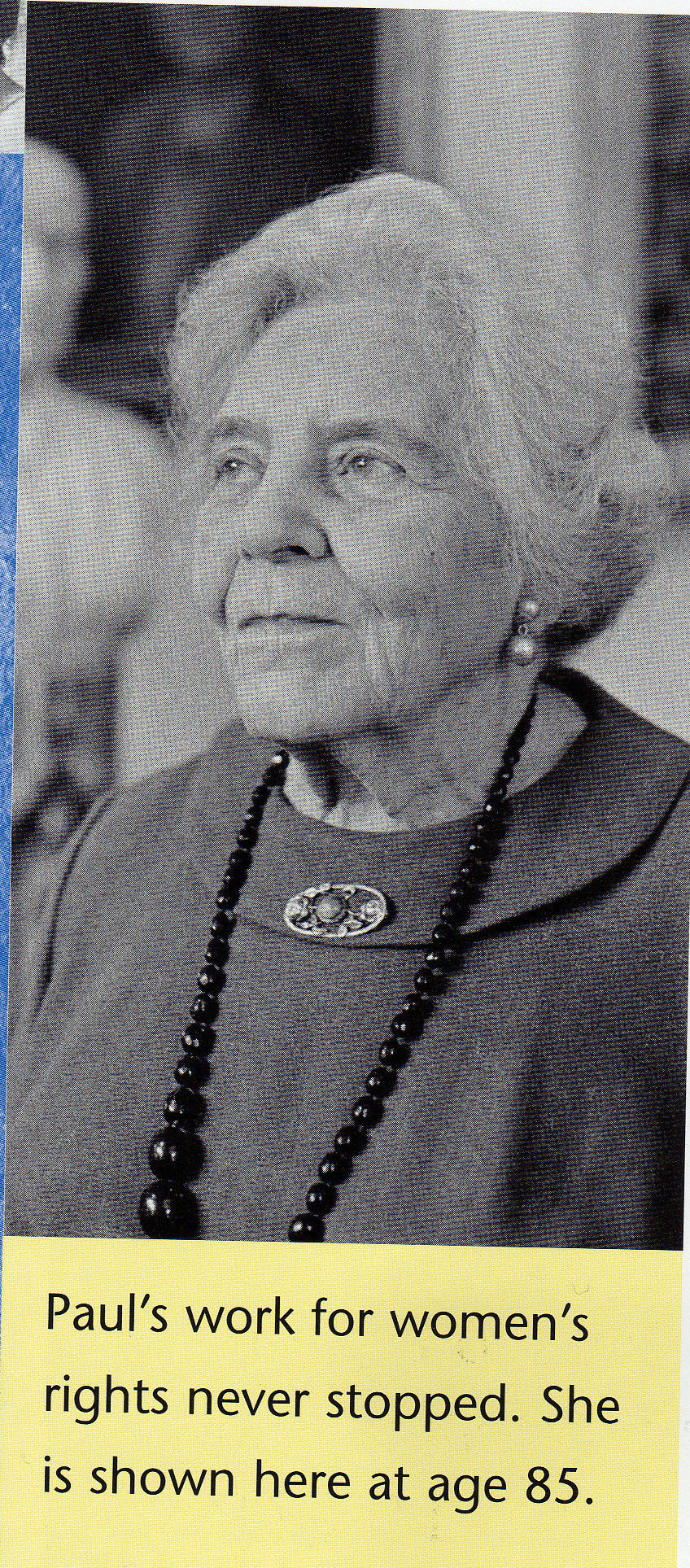

Alice Paul had lived in Paulsdale, "home farm" but generally lived a comfortable life, for the family had hired others to do most of the labor. As they were Hicksite Quakers, her parents raised her with a belief of gender equality, and a need to work to make society better. Working on a farm and being taught this way, reflected in her later years when striving for women's suffrage. Other Quakers around her also believed that men and women were equal. Her family were devoted Quakers, keeping the traditions and simple speech. She attended the Friends School in Moorestown, New Jersey and she graduated at the top of her class in 1901.
Education
Alice attended Swarthmore College-Quaker Education in 1901. Her grandfather was one of the founders of the school. Her mother Tacie had went to the college but she had to drop out. Sadly, her father died unexpectedly during her second year. Alice however, stayed for four years graduating with a degree in Biology. She was taught by many of the leading female academics of the day in Swarthmore. She participated in many sports including field hockey, tennis, and basketball. Paul was also a member of the Executive Board of Student Government and was involved in other school activities. She graduated Swarthmore in 1905. Paul attended the New York School of Philanthropy (now Columbia University) for graduate work and then received a Masters degree from the University of Pennsylvania in 1907.
England
During her time in England, Paul really got interested in fighting for women's suffrage, militancy. In 1907, she went to Birmingham, England to study social work. One day Alice Paul passed by Christabel Pankhurst, who was speaking on the topic of women's suffrage. The crowd jeered and "booed" loudly, and after the lecture Paul stopped to talk to her. As you see, at first Paul didn't actually know who was speaking, but she learned that it was the daughter of England's most radical suffragette; Emmeline Pankhurst. Because it wasn't enough to get the crowd to listen about women's suffrage, the Pankhursts went to drastic measures like breaking windows and throwing rocks to get the public aware. Paul joined them and even smashed 48 windows. They went on hunger strikes and were imprisoned many times due to these actions. Paul got the feel of more radical protests/ fighting for women's rights. When she returned to America, Paul was determined campaign for suffrage rights there.
Picketing and Prison
The NWP organized "Silent Sentinels" to hold fiery banners directed toward Wilson outside the White House. Paul's friends, Lucy Burns and Crystal Eastman helped her organize a massive protest parade. Some of the signs said, "Mr. President, how long must women wait for liberty?" At first, Wilson politely ignored the suffragists. But when the US entered World War I, the suffragists teased Wilson. I mean how could he think about sending soldiers to war for equality while he denied voting rights to women? Alice Paul and others were attacked by angry mobs and many spectators saw these protests as unpatriotic. This became an embarrassment to Wilson and he decided to do something about it; the picketers began to get arrested on the charge of "obstructing traffic."
The women at first were sentenced to a few days, but because they kept picketing, the sentence increased to seven months .The picketers were sent to Occoquan Workhouse, a prison in Virginia. Paul was placed in solitary confinement. She had nothing to eat but bread and water for two weeks. Paul became weak and was unable to walk, so she was taken to the prison hospital. There she began a hunger strike, and in response doctors put her in a psychiatric ward. The doctors had to force feed Paul with a tortuous method. But Paul continued her hunger strike for three weeks. The public began to hear of the horrible prison conditions and they felt sympathy for the prisoners. This brought support to the cause of women's suffrage.
Alice Paul’s Death

Alice Paul, died at the old age of ninety-two, due to a heart failure, on July 9, 1977. She was moved into the Greenleaf Extension Home in Moorestown, New Jersey, in her remaining years. Three years prior to her death, she was hit with a heart attack that afterwards made her disabled.




